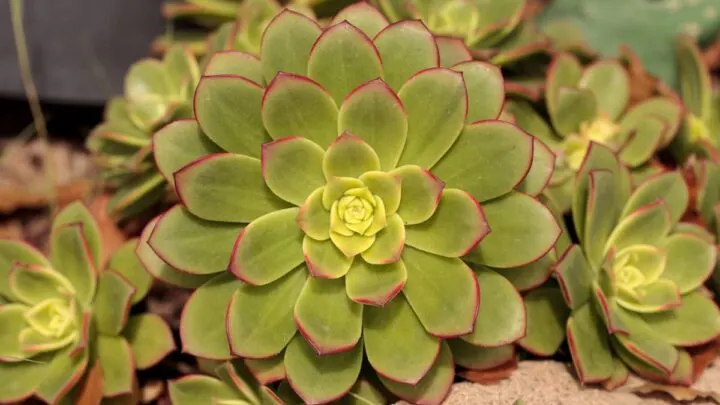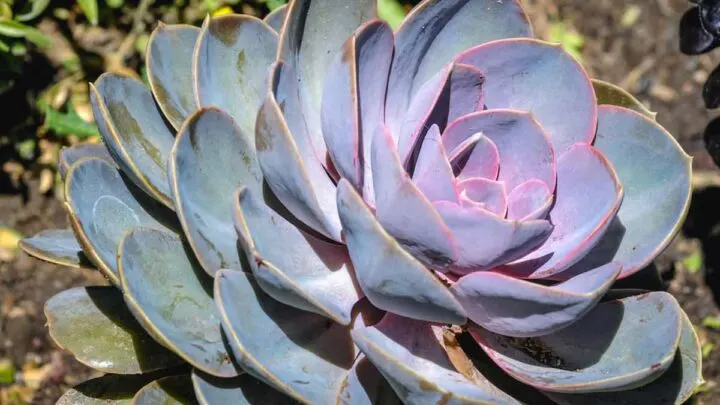Succulents have become a popular choice for many house plant lovers. Not only do they purify the air in your household, but they are very visually appealing. They are a great way to decorate your home with their unique and artsy look. Echeveria is a common species of the succulent family. They are sold in grocery stores and plant stores. If you own succulents, one of them may be echeveria, and you didn’t even know it. The pollination process of echeveria is a little unique. Many plants pollinate on their own, but can echeveria self-pollinate?
Echeveria does not self-pollinate. They require either manual pollination or cross-pollination to allow their flowers to be fertilized. Echeveria is a very low-maintenance plant that does well in warm and dry climates, but when it comes to pollination, they need a little help. Luckily, echeveria can also reproduce from a process called propagation.
Keep reading to learn about the self-pollination processes and how an echeveria plant needs to be pollinated.

What Is Self Pollination?
Self-pollination is the transfer of pollen grain from one flower of a plant to another flower on that same plant. A very small amount of pollen sheds off a flower and directly drops onto the flower beneath it. The process of self-pollination typically occurs on perfect flower plants such as sunflowers. Some fruit plants even self-pollinate, including tomatoes, apricots, and peaches.
How Is Echeveria Pollinated?
Echeveria is most commonly cross-pollinated, especially when living outside as a wild succulent. Insects, such as bees carry pollen from one plant to another, pollinating the flowers and encouraging reproduction.
Cross-pollination can also form strong winds that blow pollen and naturally transfer it. Echeveria can also be manually pollinated by transferring pollen grains from one flower to another with a tool, for example, a paintbrush. Manual pollination typically requires a human to complete.
When echeveria’s pretty pink flowers are bloomed and pollinated, they will eventually produce seeds that can be sown and grown into new echeveria plants. However, besides pollination, there are other ways in which you can use an echeveria plant to produce another one.

What Is Propagation?
Propagation is the unique process of producing a plant by removing a part of a parent plant. That plant part is then placed in the soil. It usually shortly develops roots and eventually grows into a whole new plant. It’s an economically friendly and easy way of growing more plants without purchasing new ones or growing them from seed.
How To Propagate An Echeveria Plant
You can undoubtedly propagate an echeveria plant. Here’s a step-by-step guide on how to do it yourself in the comfort of your own home.
- Choose a healthy leaf from the plant. It should be plump, not dried out, with minimal discoloration or weird-looking spots. You should pick the leaf that appears to be the nicest-looking plant. That way, your chances of it propagating successfully are higher.
- After selecting the perfect leaf, delicately pull off the leaf from the stem in a twisting motion. Take your time moving it back and forth until it detaches completely from the stem. Try your very best not to damage the leaf in the process of removing it. You want the entirety of the leaf intact. If any part of the leaf is left on the stem, it most likely won’t propagate correctly.
- Use several leaves to strengthen your chances of propagating. Lay them out flat in a dry place without direct sunlight. Drying them out properly typically doesn’t take more than two days, but in certain circumstances may take up to seven days. You will not when the leaves are fully dried when you see a callus or scab formed at the base of the leaf.

- Prepare a small pot or container with succulent potting mix. If you want to be extremely sure, dip the ends of your echeveria leaves in rooting hormone. You do not need rooting hormones to be successful.
- Stick the bottom ends of your leaves into the soil and ensure the base is covered with a tiny bit of soil. You can also lay your leaves flat, directly on the soil. Either method will result in rooting. Make sure wherever you place your pot is out of direct sunlight. Echeveria leaves will root best in shaded, dry spots.
- Lightly mist your leaves every 2-3 days, unless you live in extremely dry climates; then, mist them daily. Mist with a light amount of water. You want to discourage your leaves from browning and drying out. They won’t be able to develop roots without proper moisture.
- After around one month, you will see roots developing on the plant. They will be pink in color and only visible on the leaves that you laid flat. The roots of the leaves you may have stood up in the pot will be buried under the soil. Eventually, you will see new leaves develop and have an entirely new echeveria plant.
Final Thoughts
Overall, like every succulent, echeveria doesn’t self-pollinate. Echeveria plants are most commonly pollinated through cross-pollination and manual pollination. Interestingly enough, pollination allows flowers to grow and seeds to be produced.
Once seeds appear and can be retrieved from an echeveria plant, they can be sown and grown to create a new echeveria plant. Echeveria may not be able to be self-pollinated, but it’s pretty unique that you can propagate them from a leaf, especially with a fairly simple process.

Hi there, my name is Allie and welcome to my blog; GareningWithAllie!
Much of what you see written here is just our personal experiences with gardening. Along with the content I write here, there is also a unique collection of gardening topics covered by some of our close friends. I hope you find everything you read here to be helpful, informative, and something that can make your gardening journey the most lovely experience ever! With that said, Happy Gardening!
